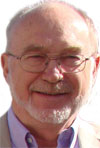
Are engineering skills undervalued in the world today? Just as modern advanced economies in the world need to earn their income by commercialising technical knowledge and clever developments, the skilled engineers need to develop and market their products and talents to keep themselves up to date in their industry. In a world run by accountants and chief executives with financial backgrounds, there are many engineers who do retain their interests and enthusiasms for engineering, and make a rewarding career as a result.
This train of thought all started from a recent press release, announcing that a UK company had appointed a much praised ex-CEO of a British CadCam organisation, to be its ‘head of global additive manufacturing’. Clive Martell, now aged 54, progressed from being a graduate recruit to become CEO of Delcam. His successful track record of delivering strong revenue and profit growth earned him the CEO of the Year award at the 2013 Grant Thornton Quoted Company Awards, another qualification to add to those such as his MSc, CEng, and MIET.
The company he has joined is Renishaw, a UK-based engineering company, which is keen to develop its ‘additive manufacturing’ (3D printing) technology. Martell’s career seems to mirror the history of Renishaw, a company established in 1973 by David McMurty (now Sir David) and John Deer. Their first product had been invented by Sir David to solve a specific inspection requirement for the Olympus engines used on the supersonic Concorde aircraft, so was a spin-off from that project. It led to a revolution in three-dimensional co-ordinate measurement, enabling the accurate dimensioning of machined components and finished assemblies.
This product led the company to diversify into sensors for CNC machine tools – used for automating machine setting operations and in process part measurement – position encoders for accurate motion control, laser interferometry for machine performance evaluation, and so on. Sir David and John Deer remain chairman and deputy chairman of Renishaw respectively and probably because of their approach, the company has consistently made a significant commitment to research and development, with around 15% to 18% of the value of annual sales invested back into R&D and engineering. Such figures even exceed the significant investments typically made by family-owned continental European engineering companies.
So how do you develop a CNC machining position measurement skill into other areas? It seems Renishaw took several paths, led separately by technology, and by customer requirements. These led into Raman microscopes for spectral analysis of materials, gauging technology, shape memory alloys, and finally additive manufacturing and rapid prototyping. The measurement system technology led into measuring/making dental crowns and bridges, which led on into medical devices for neurosurgical applications, and products to improve the diagnosis of human infectious diseases: the healthcare sector now accounts for 10% of turnover. But 3D measurement technology also led to laser measurement and surveying systems: last September the company launched new 3D laser scanning software to speed underground mapping and modelling operations for the mining and geo-technical industries. The Cavity Profiler software works with the Renishaw Void Scanner, a specialist boom-deployable underground laser scanner, which was shown at the Geomatics Indaba Exhibition in Johannesburg in August.
Renishaw has grown to a company employing 3500 people, with 2014 sales of over £350 million: there was a turndown in sales in the 2008 slump, but sales have doubled over the last five years: currently 93% of sales are outside the UK. The 2015 results, issued in July, show sales up at nearly £500m, and profits doubled from last year. The weakest sales region is Africa, Middle East and India, accounting for only 3% of revenue. This is a major business built by engineers and showing how engineering technology can be valued. As the careers/recruitment page says “Our people and products make a real difference to the world in which we live. From jet engine and wind turbine manufacturing, to dentistry and brain surgery, we solve tough engineering and scientific problems.”
Additive manufacturing aka 3D printing

Renishaw, as the only UK manufacturer of metal-based additive manufacturing (metal 3D printing) machines, has actively supported the promotion of this technology, most visibly to the public and schools through the exhibits at the Science Museum in London. This started in October 2013, and featured hundreds of printed objects to illustrate the diverse applications for the technology – including replacement body parts, artworks, metal teeth, aeroplane parts, and the notorious ‘Liberator’ plastic gun. One of the Renishaw 3D metal parts on display was a carburettor for a car engine.
The Renishaw additive manufacturing system is driven from 3D CAD data and can use a range of metal powders, including aluminium, titanium and Inconel. A high power ytterbium fibre laser is used to fuse the metal powder in layer thicknesses ranging from 20 to 100 microns, to build up the required part.
Nick Denbow spent 30 years as a UK-based process instrumentation marketing manager, and then changed sides – becoming a freelance editor and starting Processingtalk.com. Avoiding retirement, he published the INSIDER automation newsletter for five years, www.iainsider.com, and now acts as its EMEA editorial correspondent. His blog is on www.nickdenbow.com

© Technews Publishing (Pty) Ltd | All Rights Reserved